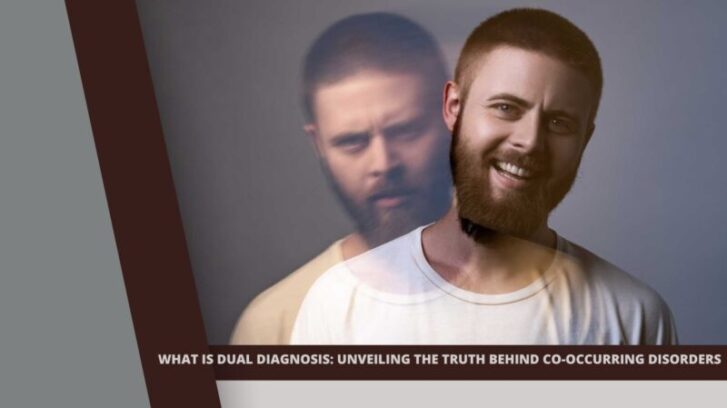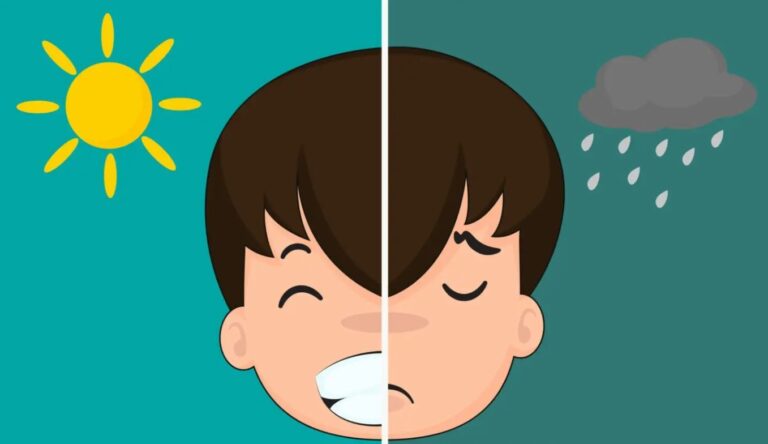Dual diagnosis refers to the co-occurrence of both a mental health disorder and a substance use disorder in an individual. This complex condition presents unique challenges as it intertwines two significant aspects of a person’s well-being.
The prevalence of dual diagnosis is alarmingly high, with research suggesting that approximately 50% of individuals with a substance use disorder also experience a co-occurring mental health condition.
The significance lies in the interplay between these disorders, as they often exacerbate and perpetuate each other’s symptoms. To address this complex issue effectively, integrated treatment approaches that consider both mental health and substance abuse are crucial.
By understanding dual diagnosis and its impact, we can better support individuals facing this challenge and promote their path to recovery.
Common Co-Occurring Disorders
Common mental health disorders associated with substance abuse include depression, anxiety disorders, bipolar disorder, post-traumatic stress disorder (PTSD), and borderline personality disorder. These mental health conditions can increase an individual’s vulnerability to developing a substance use disorder due to factors such as self-medication, impaired decision-making, or attempts to alleviate distressing symptoms.
Conversely, substance use disorders are frequently linked to mental health conditions. For instance, alcoholism is often comorbid with depression, while cocaine addiction can co-occur with anxiety disorders. The combination of these disorders poses unique treatment challenges as both aspects need to be addressed concurrently to achieve lasting recovery.
The Impact of Dual Diagnosis on Mental Health
It has a profound impact on mental health, exacerbating symptoms and creating a vicious cycle. Substance abuse can worsen existing mental health symptoms or trigger new ones, such as intensified depression, heightened anxiety, or increased paranoia.
Additionally, substance use alters brain chemistry and disrupts mental health functioning, making it difficult for individuals to stabilize their emotional state. Unfortunately, the presence of a dual diagnosis also significantly increases the risk of suicidal ideation and self-harm. In severe cases, it can even lead to Schizoaffective Disorder.
The intertwined nature of mental health and substance abuse in dual diagnosis necessitates comprehensive and specialized treatment approaches that recognize and address these interrelated challenges.
The Impact of Substance Abuse
Mental health disorders play a crucial role as triggers for substance abuse. Many individuals with mental health conditions turn to substances as a means of self-medication, seeking temporary relief from their distressing symptoms.
This self-medication hypothesis posits that substances temporarily alleviate emotional pain, anxiety, or depression, leading to a pattern of dependence. Additionally, untreated mental health conditions can hinder recovery from substance use disorders.
The unaddressed underlying issues may perpetuate a cycle of substance abuse as individuals struggle to manage their symptoms effectively. Recognizing the interplay between mental health and substance abuse is vital in providing comprehensive treatment to address both aspects simultaneously.
Diagnosing Dual Diagnosis
Diagnosing can be challenging due to the complexities involved. The co-occurrence of mental health and substance use disorders often presents with overlapping symptoms, making it difficult to differentiate between the two.
Comprehensive assessments and screening tools are essential in accurately identifying dual-diagnosis cases. These evaluations consider the individual’s history, symptoms, substance use patterns, and underlying factors that contribute to both conditions.
It is crucial to identify shared risk factors such as genetic predisposition, environmental influences, trauma history, or a history of adverse childhood experiences.
A thorough diagnostic process enables healthcare professionals to tailor treatment plans to address both mental health disorders and substance use disorders effectively.
Integrated Treatment
Integrated treatment models are key in addressing the complexities. These models emphasize simultaneous treatment for mental health and substance use disorders, recognizing the interdependence of these conditions. Integrated approaches may include a combination of psychotherapy, medication management, and support groups.
Psychotherapy, such as cognitive-behavioral therapy (CBT) or dialectical behavior therapy (DBT), helps individuals develop coping strategies, manage triggers, and modify unhealthy thought patterns. Medication management can assist in stabilizing mental health symptoms or addressing substance withdrawal symptoms.
Support groups provide a sense of community and understanding, allowing individuals to connect with others facing similar challenges. Integrated treatment approaches offer the best chance for individuals to achieve sustained recovery and improved overall well-being.
Stigma and Barriers to Treatment
The stigma surrounding mental health and substance abuse often creates significant barriers for individuals seeking help for dual diagnosis. This stigma can lead to feelings of shame, fear of judgment, and reluctance to disclose or discuss their struggles.
Moreover, common barriers, such as limited access to quality healthcare, inadequate insurance coverage, or a lack of specialized dual diagnosis treatment facilities, further hinder individuals from receiving appropriate care.
Addressing stigma and breaking down these barriers is crucial in ensuring that individuals with dual diagnosis can access the support and treatment they need. By promoting understanding, empathy, and compassion, society can foster an environment that encourages seeking help and reduces the stigma associated with dual diagnosis.
Supporting Recovery
Supporting individuals with dual diagnosis requires ongoing care and a holistic approach to recovery. After initial treatment, it is crucial to provide continuing support to prevent relapse and maintain progress.
Ongoing care may include regular therapy sessions, check-ins with healthcare professionals, and medication management to ensure stability. Building a strong support network is also essential for individuals with it.
Family, friends, and support groups can provide encouragement, understanding, and practical assistance throughout the recovery journey. Additionally, holistic approaches, including healthy lifestyle choices, stress management techniques, and self-care practices, contribute to overall well-being and help individuals effectively manage triggers and reduce the risk of relapse.
Family and Community Support
Family and friends play a vital role in supporting individuals with dual diagnosis. Educating and involving family members in the treatment process can enhance understanding, empathy, and communication. Open dialogue, active listening, and providing emotional support can make a significant difference in an individual’s recovery.
Community resources and organizations dedicated to dual diagnosis support also play a crucial role in providing information, referrals, and counseling services.
Collaborative efforts between healthcare professionals, families, and community support systems can create a nurturing environment that fosters recovery and reduces the sense of isolation often experienced by individuals with dual diagnosis.
Hope and Success Stories
Sharing inspiring stories of individuals who have overcome can provide hope, motivation, and encouragement to those facing similar challenges. These stories highlight the resilience, strength, and determination needed to navigate the complexities of dual diagnosis.
Recovery journeys and strategies for maintaining wellness can serve as roadmaps for others on their path to healing. It is essential to emphasize that recovery is possible, and individuals can lead fulfilling lives with the right support, treatment, and ongoing self-care practices.
By celebrating success stories, we can inspire and empower those struggling with co-occurring disorders to believe in their capacity for recovery and to seek help on their own journey toward well-being.
FAQ
1. Can any mental health disorder co-occur with substance use disorder?
Yes, many mental health disorders can co-occur with substance use disorder. Some of the most common mental health conditions associated with substance abuse include depression, anxiety disorders, bipolar disorder, post-traumatic stress disorder (PTSD), and borderline personality disorder.
However, it is important to note that any mental health disorder can potentially co-occur with substance abuse, as the relationship between the two is complex and multifaceted.
2. How does substance abuse worsen mental health symptoms?
Substance abuse can worsen mental health symptoms through various mechanisms. Firstly, the use of substances can directly affect brain chemistry, disrupting the balance of neurotransmitters responsible for mood regulation, resulting in heightened anxiety, depression, or other mental health symptoms.
Secondly, substance abuse often leads to poor judgment and impaired decision-making, which can exacerbate existing mental health conditions or trigger new episodes. Additionally, the consequences of substance abuse, such as strained relationships, financial problems, or legal issues, can contribute to increased stress and emotional instability, further worsening mental health symptoms.
3. What is the self-medication hypothesis in dual diagnosis?
The self-medication hypothesis suggests that individuals with mental health disorders may turn to substances as a means of self-medication. They may use drugs or alcohol to alleviate distressing symptoms, temporarily numb emotional pain, or escape from overwhelming thoughts or feelings.
However, while substances may provide temporary relief, they ultimately exacerbate the underlying mental health condition and contribute to the development of a substance use disorder. It is crucial to address both the mental health disorder and the substance abuse issue to break the cycle of self-medication and achieve sustainable recovery.
4. Are there increased risks associated with it, such as suicide?
Yes, individuals with dual diagnosis face increased risks, including an elevated risk of suicide and self-harm. The combination of mental health disorders and substance abuse significantly amplifies these risks. Substance abuse can impair judgment and impulse control, making individuals more vulnerable to suicidal ideation or engaging in self-harming behaviors.
Additionally, the co-occurrence of mental health disorders, such as depression or bipolar disorder, with substance abuse further heightens the risk of suicidal tendencies. It is vital to provide comprehensive and specialized care to address these risks and ensure the safety and well-being of individuals with dual diagnosis.
5. How can stigma affect individuals with dual diagnosis?
Stigma surrounding mental health and substance abuse can have profound negative effects on individuals with dual diagnosis. Stigma may lead to feelings of shame, guilt, and isolation, preventing individuals from seeking help or disclosing their struggles.
The fear of judgment and social consequences can act as significant barriers to accessing appropriate treatment and support. Stigmatizing attitudes and beliefs in society may further perpetuate stereotypes, discrimination, and marginalization, hindering recovery and overall well-being.
Reducing stigma and promoting understanding are essential in creating an environment where individuals with dual diagnoses can feel accepted, supported, and empowered to seek the help they need.
6. What are some barriers to treatment for individuals?
There are several common barriers to treatment for individuals with dual diagnosis. Limited access to quality healthcare, including a lack of specialized treatment facilities or trained professionals, can pose significant challenges. Inadequate insurance coverage or financial constraints may also prevent individuals from receiving appropriate care.
Moreover, societal attitudes and stigma surrounding mental health and substance abuse can create reluctance to seek help or disclose their conditions. Lack of awareness or education about dual diagnosis among healthcare providers and the general public can also contribute to delayed or insufficient treatment.
Addressing these barriers requires improved access to specialized services, increased funding, comprehensive training for healthcare professionals, and public awareness campaigns to reduce stigma and promote understanding.
7. Are there specific treatment models designed for dual diagnosis?
Yes, there are integrated treatment models specifically designed for it. These models recognize the interplay between mental health and substance abuse and emphasize the importance of addressing both aspects simultaneously. I
Integrated treatment typically includes a combination of psychotherapy, medication management, and support groups. Psychotherapy, such as cognitive-behavioral therapy (CBT), dialectical behavior therapy (DBT), or motivational interviewing, helps individuals develop coping strategies, address underlying issues, and modify unhealthy thought patterns and behaviors.
Medication management may involve the use of psychiatric medications to stabilize mental health symptoms or address substance withdrawal symptoms. Support groups provide a sense of community, peer support, and encouragement. Integrated treatment models offer comprehensive care tailored to the unique needs of individuals with dual diagnosis.
Final Words
In conclusion, dual diagnosis refers to the co-occurrence of mental health and substance use disorders, affecting a significant portion of the population. The complex interplay between these conditions calls for integrated treatment approaches that address both aspects simultaneously.
By understanding the impact of dual diagnosis on mental health and substance abuse, we can support individuals on their path to recovery.
By addressing stigma and barriers to treatment, fostering family and community support, and sharing hope and success stories, we can create a compassionate and inclusive environment that promotes understanding, reduces judgment, and empowers individuals facing dual diagnosis to seek the help they deserve.

















